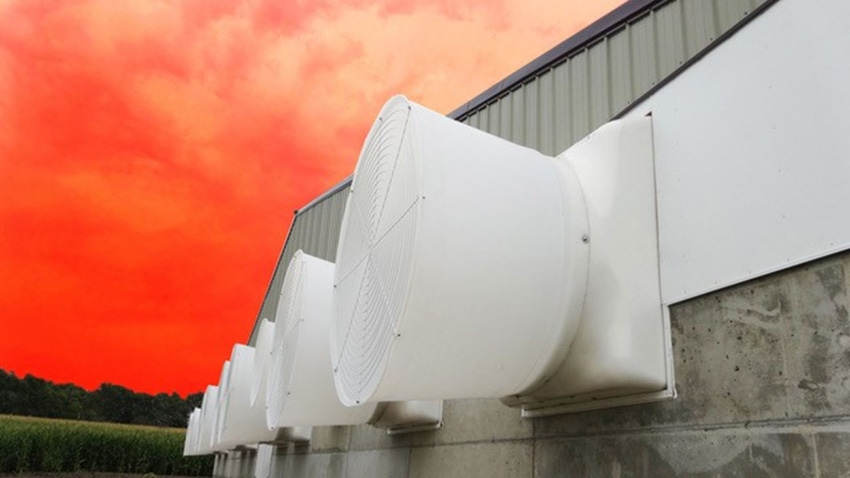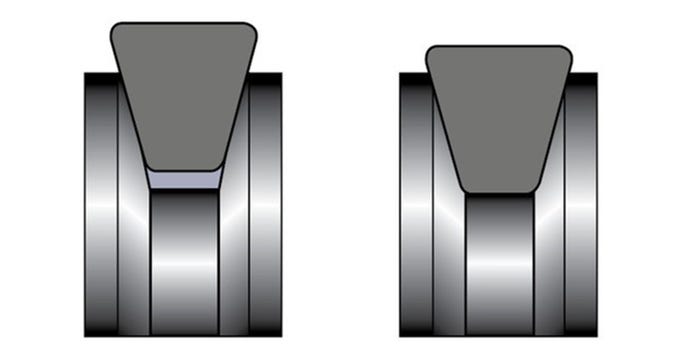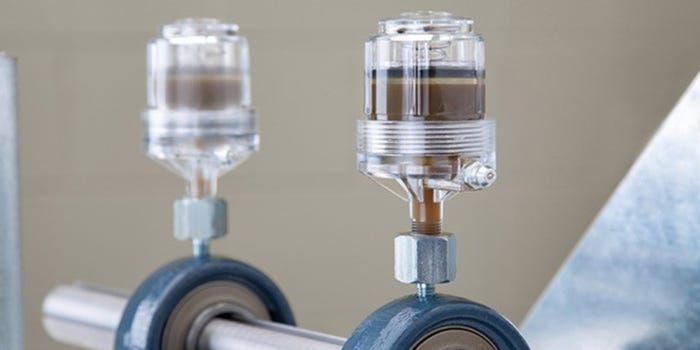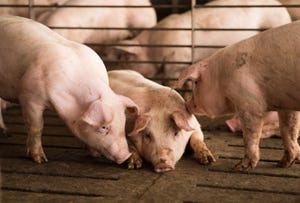Time for preseason fan maintenance
Performing preseason maintenance on summer fans will maximize their performance during hot weather. Here is a simple maintenance checklist:
April 1, 2024

1) Replace fan belts
Replacing fan belts every year is a key task in preseason maintenance. Over time, fan belts can wear down by as much as 20%, leading to reduced fan performance. Contrary to popular belief, fan belts do not stretch but instead wear down from constant contact against the pulleys. As they become thinner, they sit lower in the pulley grooves and cause the fan blades to rotate slower.

Friction causes belts to become thinner and set lower in the pulley grooves. Photo submitted by Hog Slat Inc.
It is a common misconception that it isn't necessary to replace link-style belts annually but only replace damaged individual links. Every link is subject to the same amount of flexing, so the rest will likely fail soon. Link belts still wear over time and should be replaced every year, just like conventional belts. The biggest benefit of link belts is how easy it is to have the right size belt on hand. Instead of ordering a specific belt for each fan motor, you can order in a bulk pack. For instructions on replacing both styles of fan belts, see our Belt Replacement video.

Compare the sharp V-shaped grooves on the new pulley with the rounded grooves of the worn pulley. Photo submitted by Hog Slat Inc.
2) Align fan pulleys
While the belts are off, visually inspecting the pulley grooves for any signs of wear is essential. The grooves should have a sharp V shape. If you notice any pulleys with rounded grooves, it is best to replace them. To align new pulleys with the existing drive assembly, you can use the Laser Fan Pulley Alignment Kit. This tool is straightforward: place the laser pointer in the groove and adjust the target piece in the new pulley until it lines up. You can use the target piece as a pulley groove gauge to check existing pulleys for wear.
3) Use the same size replacement pulleys
Using a bigger pulley increases the speed of the fan blades, which also increases the motor amp draw. Over an extended period, this increased amp draw will lead to overheating and premature motor failure. A small pulley, on the other hand, will cause the blade to spin slower, reducing expected air delivery.
4) Adjust auto-tensioner
After replacing the belts or pulleys, you can make any necessary adjustments to the auto tensioner. To do this, flex the tensioner several times to ensure the internal spring is not seizing. Additionally, check for proper tension by verifying the position of the indicator marks on the body. The indicator bar should register between the first and second marks on the tensioner body with the belt on. If more tension is needed, rotate the body nut counterclockwise. See more on adjusting auto-tensors here.

Auto greaser continuously applies lubrication to fan bearings. Photo submitted by Hog Slat Inc.
5) Use Auto Greaser for fan bearings
Let's be honest: very few people will take the time to grease bearings multiple times during the season. When prepping fans for summer, grease gets pumped into the bearings until it oozes out the sides. Not only does this damage the seals, but housing full of grease can generate excess heat through fluid friction. The Auto Greaser ends the cycle of over- and under-lubrication. Click for a short video and more information.
6) Examine shutters
Dirty shutters can reduce fan output by up to 8%. Avoid using a power washer and use a broom or brush to clean the shutters. You can leave the broom in a convenient location to make it easy to clean the shutters throughout the season. Additionally, replace any bent or damaged vanes or rods that might prevent the shutters from closing properly.
7) Inspect cones
Exhaust cones improve fan performance by 10%, but missing parts will nullify their effectiveness. Replace any missing parts damaged by snow, wind, or ice.
Moving large volumes of air is critical to cooling pigs during hot weather. Annual preseason maintenance ensures your farm's fans deliver maximum airflow at the highest possible efficiency.
You May Also Like




